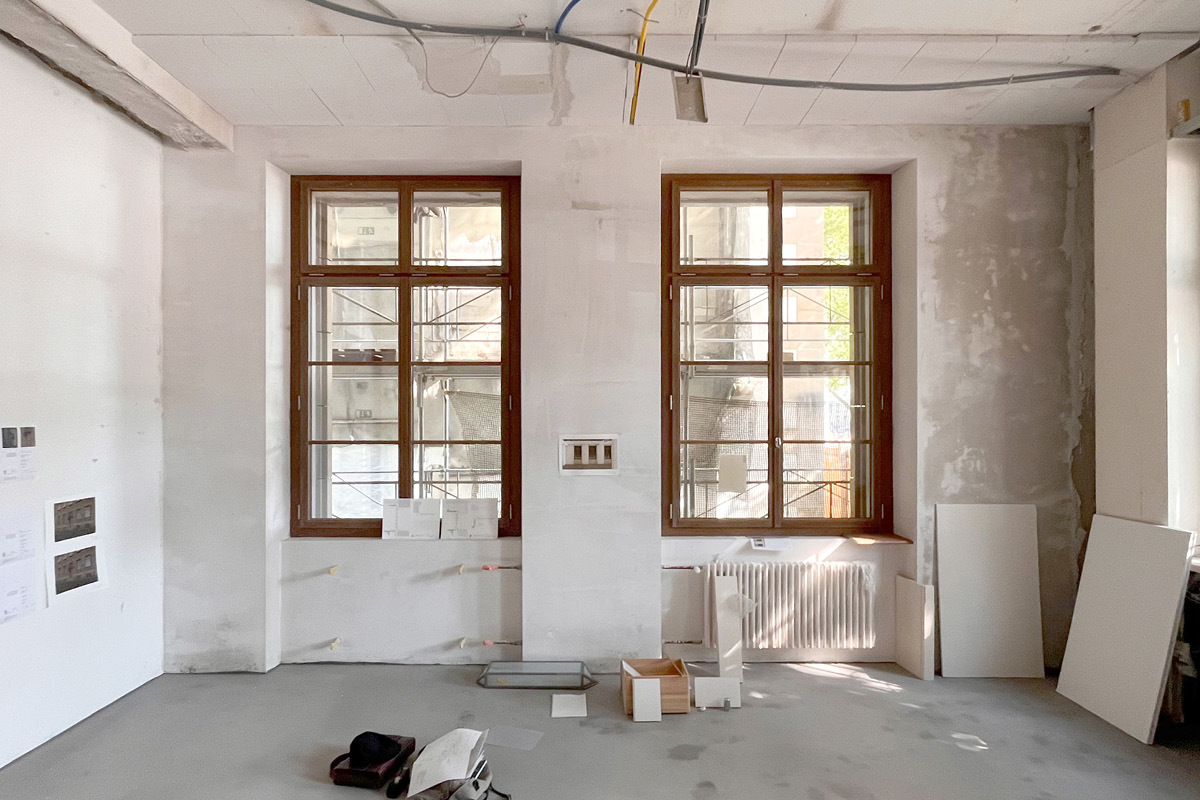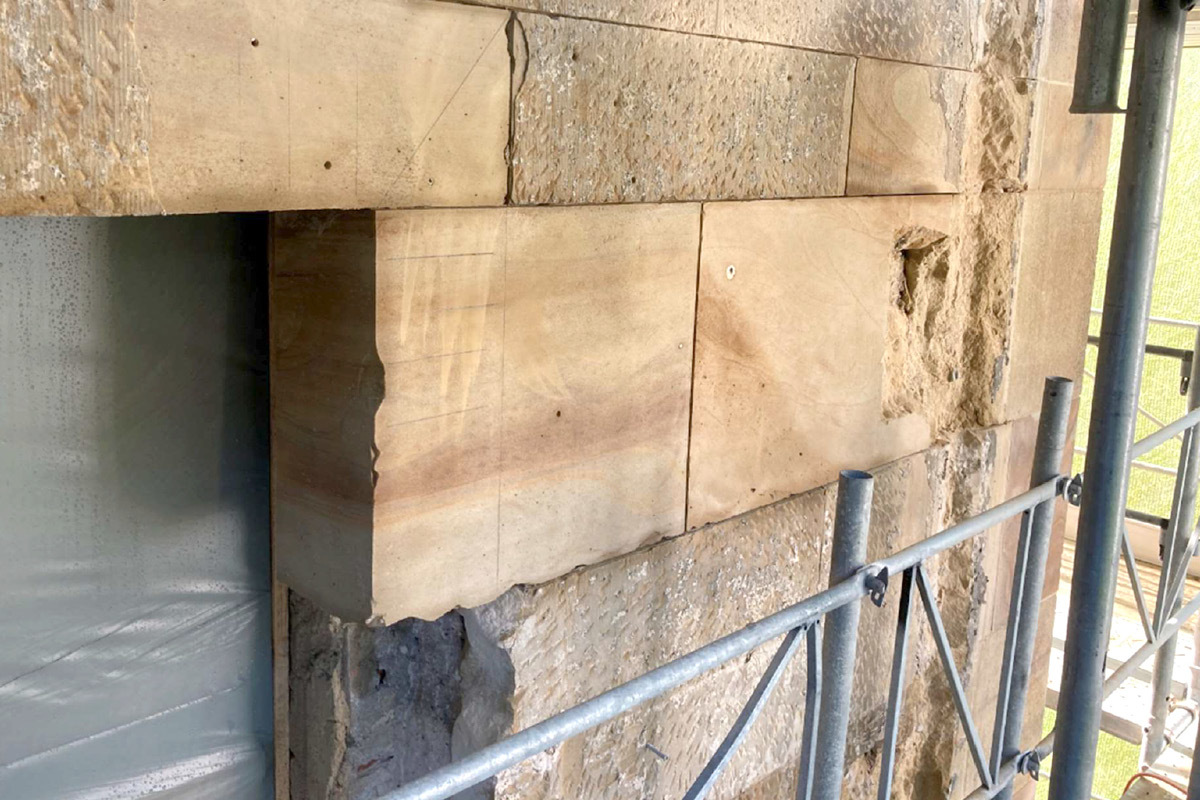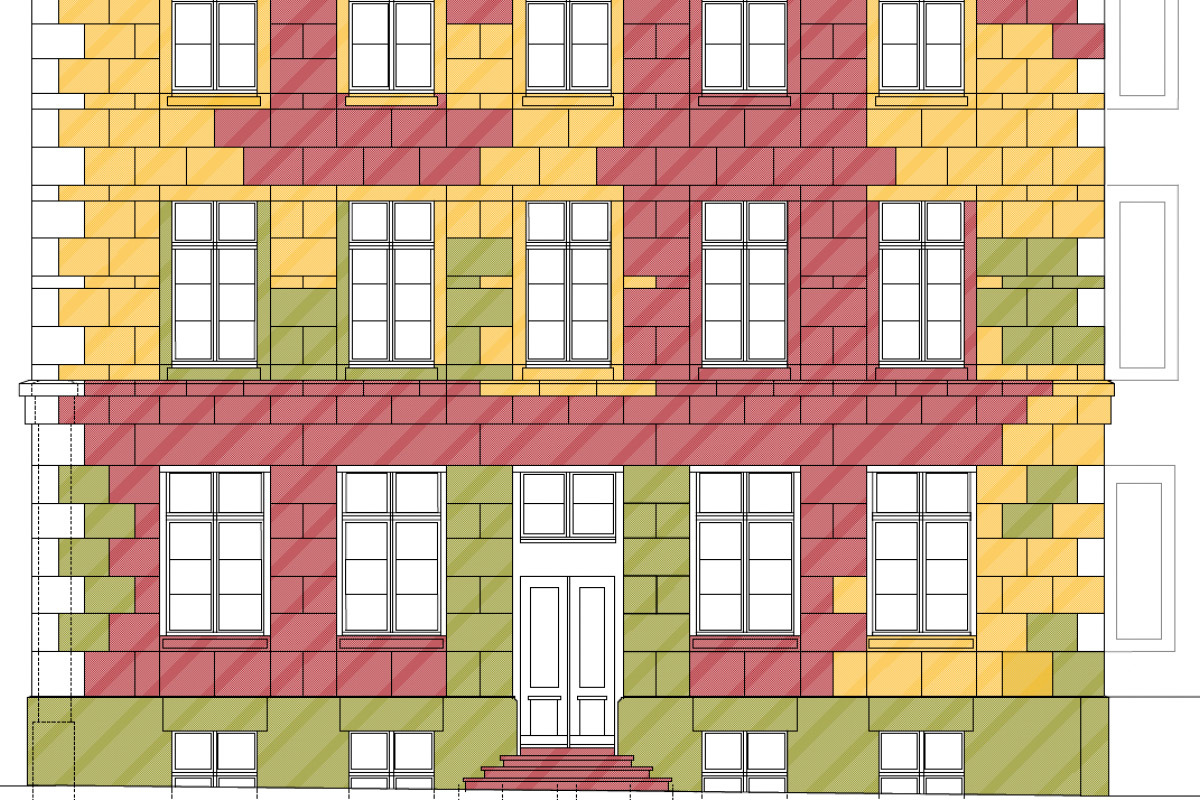The prestigious former administrative building of J.R. Geigy AG was built in 1930 and in the 1940s was connected on its north side with the neighbouring building by means of a connecting construction. Now, though, this connecting building has been demolished as part of the gradual opening of Rosental Mitte.
A NEW HISTORIC FACADE FOR THE SECONDARY SCHOOL.
After elaborate investigative works and the subsequent demolition of the connecting building in summer 2021, the poor condition of the heritage-listed natural stone façade was visible for the first time, giving an indication of just how much reconstruction work was needed. Once the façade was fully scaffolded and after a period of intense planning, the work began – in small steps – to demolish the rest of the connecting building.
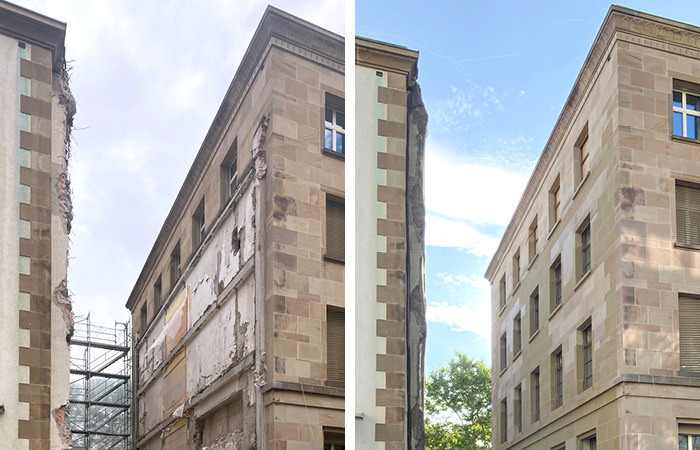
Left: during demolition; right: the new façade.
The various static reinforcements to secure the original façade parts were carried out floor by floor and in close cooperation with engineers, stone technicians and the heritage protection authority. Since the original Maulbronn sandstone is no longer mined, an alternative had to be found. Thanks to the support of stone specialist Sylvia Luchsinger, Lauchheim sandstone was identified as a replacement material for the reconstruction due to its physical properties and its colour.
While the demolition work was ongoing, the reconstruction by architecture firm Back Simonsen was being meticulously planned and calls for tenders were being sent out. The complexity of the building dimensions meant that each and every stone was drawn in 3D and the blanks prefabricated at the quarry according to these plans. Over a period of six months, the building’s masonry work was completed with great dedication and precise craftsmanship by Stefan Schnell and his team.
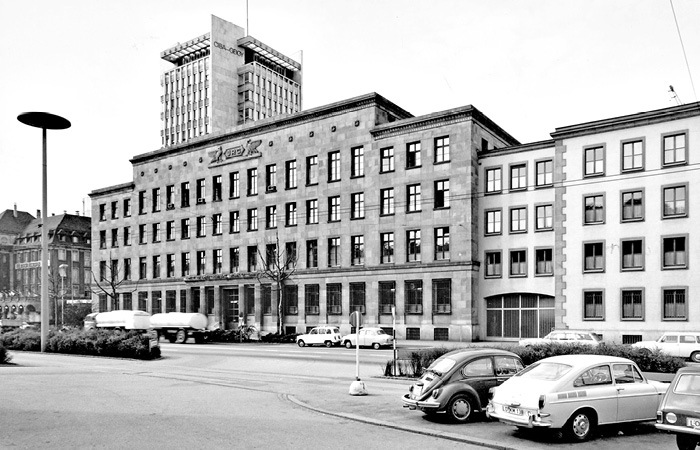
Street façade with connecting building – 1978.
